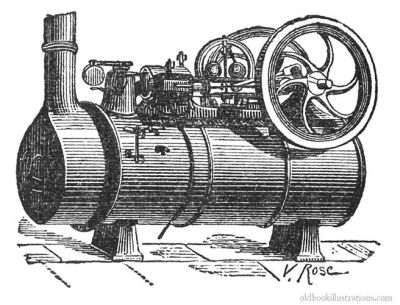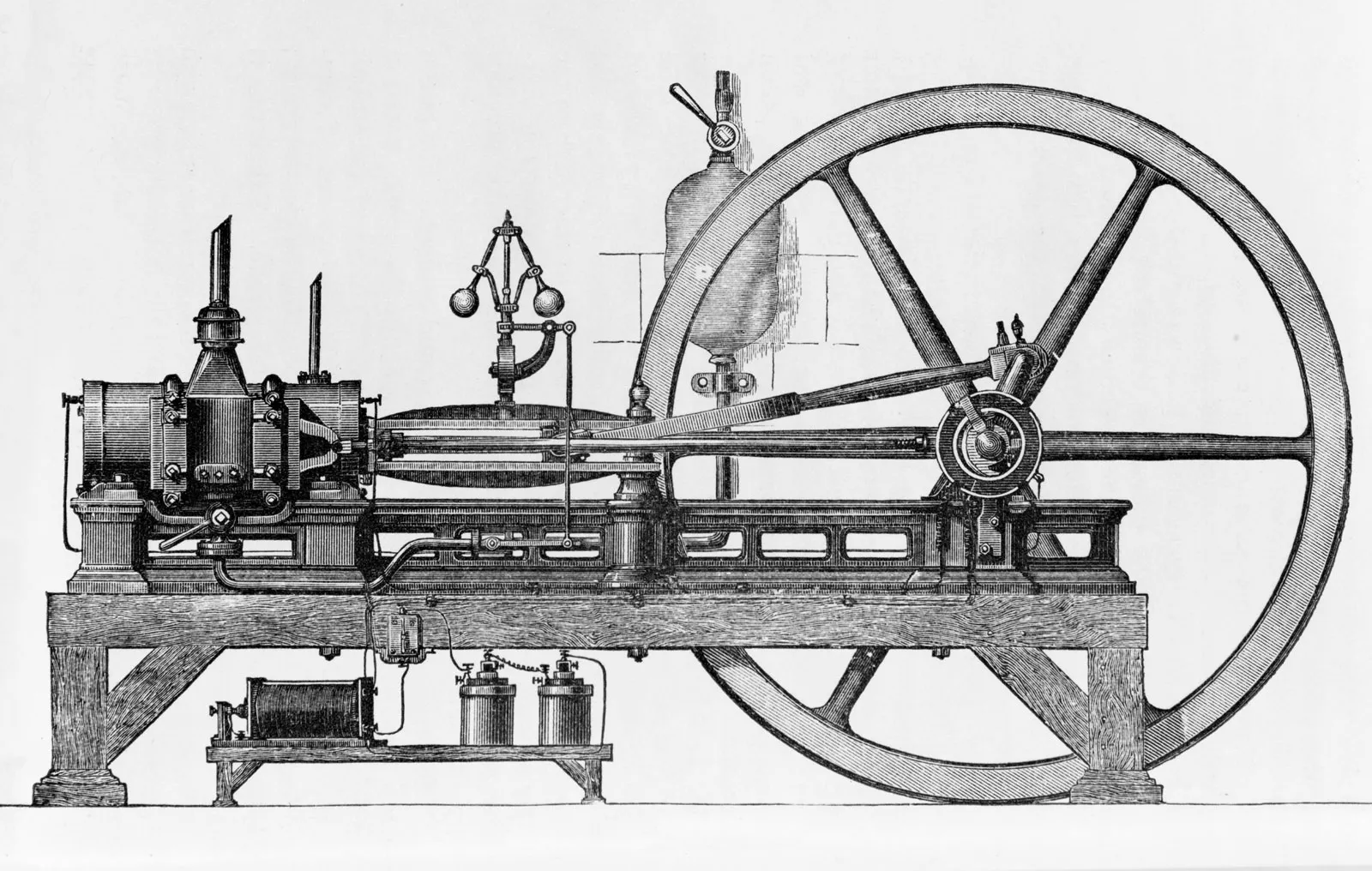Andrew Fultz
VladimirGenkovski
AP World History: Modern 🌍
577 resourcesSee Units
New Technologies
The steam engine and internal combustion engine were the most significant and transforming technological innovations in arguably all of human history. Their ability to harness power/energy from fossil fuels, such as coal and oil, powered boats and trains in the 1800s. Transportation was no longer dependent upon the weather, and alongside the production of iron, stronger ships were made to accompany longer, more frequent journeys. The widespread use of fossil fuels also led to the development of new industries, such as the oil and gas industry. It significantly contributed to the Industrial Revolution and the growth of modern economies.
Steam engine

Steam Engine. Image courtesy of Bibliotheca Alexandrina.
The invention of the steam engine in the 18th century led to the first practical power source that could be used to drive machinery and transport. Significant contributions of the steam engine include:
Transportation: Steam engines were used to power trains and steamboats, greatly increasing and reducing transportation costs.
Industry: Steam engines were used to power textile mills and factories, greatly increasing the efficiency and productivity of manufacturing.
Energy production: Steam engines were used to generate electricity, allowing cities to grow and develop new industries.
Mining: Steam engines allowed the extraction of coal and other minerals at deeper levels.
Agriculture: Steam engines were used to power threshing machines, plows, and other agricultural equipment, increasing the farming efficiency.
Internal combustion engine

Internal combustion engine. Image courtesy of Encylopedia Britannica.
The 19th-century invention of the internal combustion engine revolutionized transportation and industry, as seen in:
Transportation: There was an increase in mobility and a decrease in transportation costs, allowing people and goods to move or be moved more rapidly and efficiently.
Industry: Building new structures and producing goods became even faster and more efficient.
Energy production: Being used for electricity generation, power production became more efficient and reliable.
Military: Militeraies increased their mobility and effectiveness with new tanks and other military vehicles that used the internal combustion engine.
Second Industrial Revolution
The Second Industrial Revolution is arguably a part of the larger story of the Industrial Revolution, but it did showcase changes from the beginning of the Industrial back in 1750. In the late 1800s, humanity started using chemicals, steel, precision machinery, and electricity to increase production.
Oil and petroleum were used for energy and eventually powered automobiles.
Advancements in manufacturing and steel production
The widespread use of assembly line techniques, particularly in the automobile industry, greatly increased the efficiency and productivity of manufacturing. The Bessemer process greatly increased the efficiency of steel production, making it cheaper and more widely available. This led to the construction of larger and stronger buildings, bridges, and ships.
Advancements in energy production
The widespread use of electricity, particularly generated by steam turbines, greatly increased the efficiency and reliability of energy production. This facilitated the growth of new industries, such as the electrical industry, and improved the efficiency of existing industries. Electricity also allowed factories to work more, including during nighttime (being helped with the light bulb).
Transportation & Communication
The railroad and steamship improved access to interior lands. For centuries, humanity explored, via ocean, distant places. They did this because humanity relied on wind power and ocean currents for energy, but with the advent of industrialization, energy came from fossil fuels. With the railroad and steamship, countries now explored large sections of land and rivers, including going against the current in those rivers. The railroad and steamships led to migration into those lands because they made transportation quicker and safer, which led to conflict with people already living in those areas. It also allowed for trade to take place easier.
Steamship, the mid-1800s. Image courtesy of Wikimedia
The widespread use of concrete and steel in transportation infrastructure greatly improved the durability of transportation systems, including urban cities. Buses and tramways crossed cities overground, and the first subway line opened in 1863 in London using steam locomotives.

10 January 1863: trial trip on the London Underground. Image courtesy of Odd Salon.
The invention of the telegraph improved communication. The Mongols, back in the 1200s and 1300s, had a system in place where riders and horses would relay messages across their empire. Despite those efforts and sheer willpower, the telegraph was quicker. It provided people migrating to distant interior regions a safety net knowing they could communicate back to their original location. This major technological breakthrough made the world feel more connected and fostered migration.
Trade benefitted from improved communication as individuals and businesses were better connected, facilitating trade and commerce growth. Financial information could be instantly transmitted; the efficiency of shipping and other forms of transportation increased; businesses could communicate (and hence negotiate, exchange contracts, and complete transactions) more easily; and the efficiency of diplomatic relations and trade negotiations between countries improved.
🎥Watch: WHAP - Continuity and Change in an Industrial Age
Browse Study Guides By Unit
🐎Unit 1 – The Global Tapestry, 1200-1450
🐫Unit 2 – Networks of Exchange, 1200-1450
🕌Unit 3 – Land-Based Empires, 1450-1750
🍕Unit 4 – Transoceanic Interactions, 1450-1750
✊🏽Unit 5 – Revolutions, 1750-1900
🚂Unit 6 – Consequences of Industrialization, 1750-1900
💣Unit 7 – Global Conflict, 1900-Present
🥶Unit 8 – Cold War & Decolonization, 1900-Present
✈️Unit 9 – Globalization, 1900-Present
✏️Frequently Asked Questions
🤔Exam Skills
👉🏼Subject Guides
📝AMSCO Notes

Fiveable
Resources
© 2025 Fiveable Inc. All rights reserved.